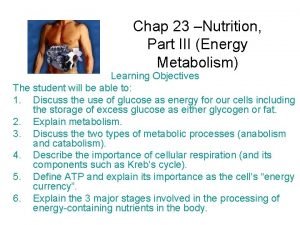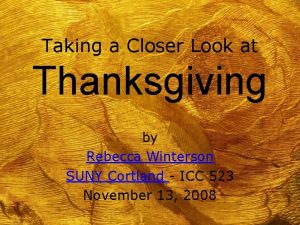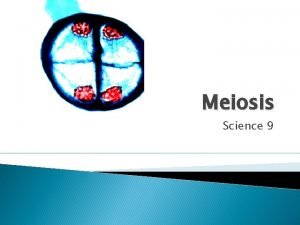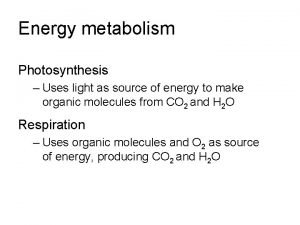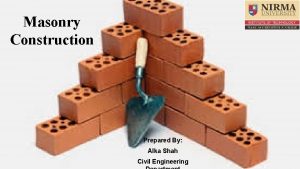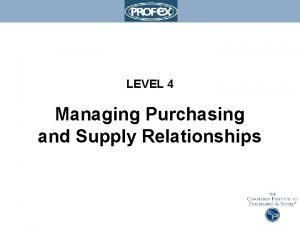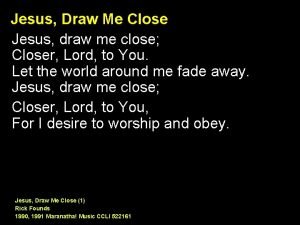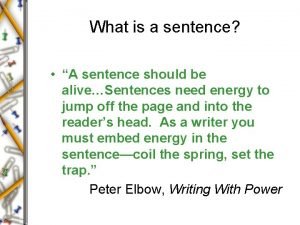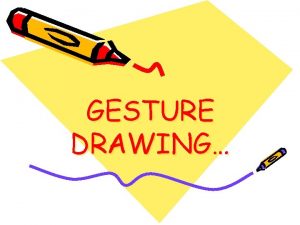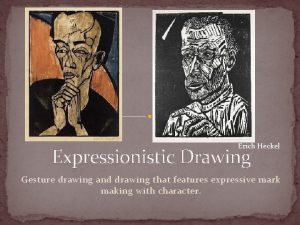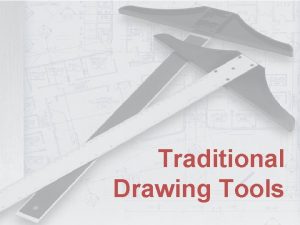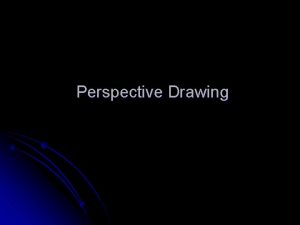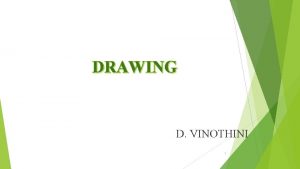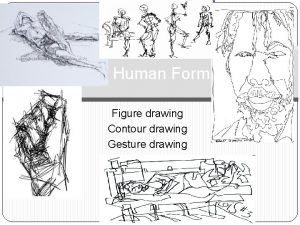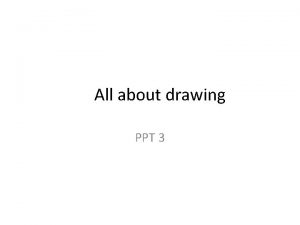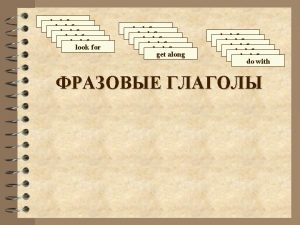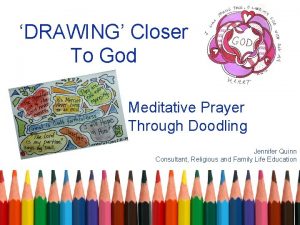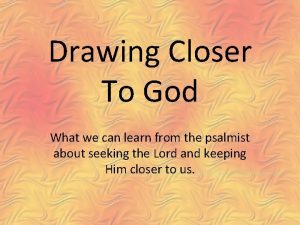A CLOSER LOOK AT DRAWING Drawing is a





















- Slides: 21

A CLOSER LOOK AT DRAWING

Drawing is a process of making marks. It is the interrelationships between these marks and their impact on the viewer that makes a drawing successful. Drawings must be well designed and arranged; learning to draw means learning how to see more effectively.

WHY DO WE DRAW? n n n n TO MAKE A RECORD OF EVENTS TO MAKE SOMETHING THAT IS AESTHETICALLY PLEASING TO EXPLORE INNER IDEAS TO GET IDEAS TO EXPRESS OURSELEVES TO RELEASE EMOTIONS TO REACT TO RELAX

WHY CAN SOME PEOPLE DRAW ‘BETTER’ THAN OTHERS? n n n 1. 2. 3. Understand that there is a different type of “seeing” used in drawing, different from the type of “seeing” we use everyday. You need to “see” differently in order to draw successfully. “seeing” for drawing includes: Accurately being able to judge shapes, relationships and proportions within an object. Recognizing and organizing the objects/subjects that you are drawing in order to use them at their best potential. Reading and interpreting the marks in your drawing as you are working on it.

JUDGING SHAPES In many cases, a mature and highly intellectual student may draw like a six year old. Why? n The person may not have done much drawing since that age. n The person is also relying on a set of symbols learned and developed in childhood: n Is this a: a) Dog b) Person c) House

n Universal symbols play a very important role in how we draw and how we perceive the drawings of others. n We need to make our symbols more naturalistic after we begin to examine the person or object that we are trying to draw.

RECOGNIZING THE POTENTIAL OF A DRAWING n Was discussed in Grade 10 (what makes a successful still life) n Is our ability to organize large subjects (people, landscapes) into lines, forms and values. n If the thing that you are trying to draw doesn’t seem all that exciting, try a different viewpoint, try moving the objects around, or THINK about why the drawing lacks potential at that point.

READING THE MARKS OF THE DRAWING ITSELF n As you start to draw, you have to determine whether or not the marks that you have made ACCURATELY represent some aspect of the subject that you are trying to draw. n Constantly observing the drawing as it is being created will allow you to balance the elements of the drawing as it evolves.

WARM UP EXERCISE Draw small circles with your hand, and gradually increase the size of the circles until you are using the whole arm. Be sure to use a large sheet of paper for this. n Begin to produce scribbles, strokes and lines that have no meaning at all. Release all of your tension in these lines. A large sheet of paper is essential. n Warm up exercises only take a few minutes, and can really help you relax your hand arm before a serious drawing session. n

DIFFERENT TYPES OF LINE GESTURAL *Your eye and hand move very rapidly during this type of drawing *This type of line-making is EXTREMELY important in figure drawing *NO DETAILS in the picture…until the basic form and design are dtermined and clearly seen *Can be described as ROUGH, FLUID

CONSTRUCTION LINE n Used to define subjects in geometric terms n Can be two and three dimensional n Can be in perspective n This type of line is more precise than gesture, but still very NATURAL

CONTOUR LINE n Follows the edge of a form n Very easy to see n Varies in its thickness n Can be bold, smooth, rough, delicate, thick or thin.

CROSS CONTOUR Follows the outside edges of shapes and also around the edges of interior forms and details. n Moves across the surface of the object to describe the structure. n Placed closely together to make patterns across the surface. n

VOLUME GESTURE VERY quick and rapid drawing n Often used as a warm up exercise for drawing sessions, especially with figure work. n The best way to show the WEIGHT AND VOLUME of the figure that you are drawing. n Done by quickly overlapping small oval marks that widen as the shape widens, and concentrate as the shape becomes thin. n

TYPES OF MATERIAL MULTIPURPOSE PAPERS, such as newsprint, can be used for warm up and preparatory exercises. Multipurpose paper is usually affordable, and can receive almost all types of product: charcoal, pastel, conte, pencil, etc. These papers come in wide variety of colours and weights. n SPECIALTY PAPERS are papers that have been specially designed to suit a particular medium. Charcoal and Pastel papers are usually grainy and rough so that they hold the dust produced by the medium. n WATERCOLOUR PAPER comes in endless variations of thickness and surface texture combinations. Its special function is the way it absorbs water. These papers are usually quite heavy, and some artists often presoak the paper in water before use. Watercolour paper can also be used for other mediums, in non-traditional ways but it is expensive. n PEN AND INK PAPER is usually smooth-surfaced, medium weight. Multipurpose paper can also be used. The smooth surface prevents the pen nib from snagging and allows the ink to go on smoothly. n

DRAWING MEDIUMS n CHARCOAL: there are 4 different types of charcoal that you can use: vine, compressed, charcoal pencil and powdered charcoal. * Vine charcoal is in its natural form, made from straight beech or willow twigs that have been kiln fired until all organic material had burned off and the carbon remains. • Other charcoals come from powderizing this vine charcoal and reformatting it into different products. n PENCILS: There are dozens of types of pencils, with different functions. The ‘B’ pencils are soft; the ‘H’ pencils are hard; the ‘F’ pencils are the hardest, and HB is ‘neutral’ (not too hard, not too soft). Pencils are readily available, inexpensive and can be erased easily. They also travel well. n CONTE: Conte is a waxy/chalky medium that is good for quick sketching and also finished work. It sticks to any paper surface, and will smudge if you want it to. They come in 3 degrees of hardness: #1 (very hard), #2 (medium) and #3 (soft). Colours range from earth reds, to orange, to browns to grays, blacks and white.

DRAWING MEDIUMS CONTINUED… n CHALK AND PASTELS: Are made from natural pigments that are compressed into sticks with a binding agent (sometimes oil). They can be coarse or fine in texture, dry or oily, hard or soft. Vast range of colours available. Range in quality and price. n PEN AND INKS: Very fluid for drawing. Ink can be applied with a brush or a special pen can usually be applied to all papers. Very easy to produce thick and thin lines quickly. Ink can be diluted to create different values on work.

THE MODES OF DRAWING There are many different modes of drawing: • • • Descriptive Drawing Ornamentation and Illustration Drawing as Social Commentary Drawing as a means of Clarifying Ideas (prep work) Drawing as a means of Self Expression *Sometimes these categories OVERLAP each other!

DESCRIPTIVE DRAWING AND ORNAMENTAL / ILLUSTRATIVE DRAWING … can often compliment written or verbal information. Remember that an image often stays in our minds long after the text is gone! SOCIAL COMMENTARY DRAWINGS… can communicate messages about people in various ways; through exaggeration, personal interpretation or distortion (I. e. , editorial cartoons, Daumier) CLARIFYING IDEAS… drawing is one of the quickest ways to develop an idea in your head, and is an essential part of your thought process. Drawings of this style often turn into a painting, sculpture or more finished drawing. SELF EXPRESSIVE DRAWING… every drawing ultimately falls into; every drawing expresses something of the maker, whether it is emotion, sense of design, imagination…

THE IMPORTANCE OF WARMING UP Warming up helps to make your arm loose and relaxed. n It helps you organize your thoughts and what you are looking at. n It is sometimes helpful to use LARGE sheets of inexpensive paper and soft pencils or charcoal. n

 Look up look down look all around
Look up look down look all around Chapter 7 a closer look energy metabolism pathways
Chapter 7 a closer look energy metabolism pathways A closer look at thanksgiving
A closer look at thanksgiving A closer look at prophase i
A closer look at prophase i Look closer see me
Look closer see me Ch 7 a closer look energy metabolism pathways
Ch 7 a closer look energy metabolism pathways Difference between toothing and racking back
Difference between toothing and racking back Care closer to home
Care closer to home Cips relationship spectrum
Cips relationship spectrum Jesus is the rock and he rolls my blues away
Jesus is the rock and he rolls my blues away What is a sentence
What is a sentence Creeping closer meaning
Creeping closer meaning God is closer than you think
God is closer than you think Care closer to home
Care closer to home Lexair collet closer
Lexair collet closer Squint junction in brick masonry
Squint junction in brick masonry Care closer to home
Care closer to home One day closer quotes
One day closer quotes Friend that sticks closer than a brother esv
Friend that sticks closer than a brother esv In alternators the welding current is produced on the
In alternators the welding current is produced on the Picture analysis activity 1
Picture analysis activity 1 Look at the picture in activity 3
Look at the picture in activity 3

